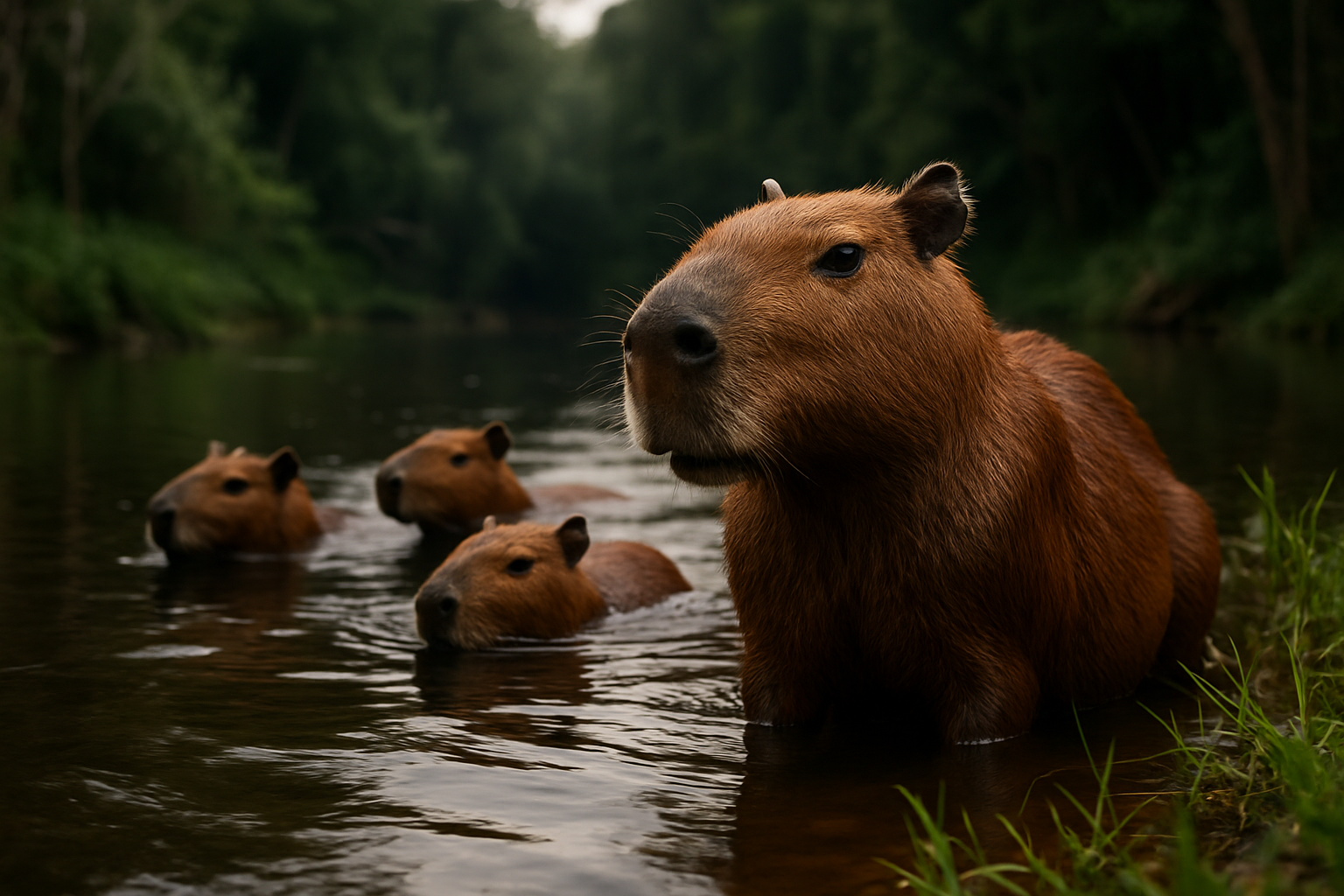The Surprising World of Capybara Social Dynamics
In the lush wetlands of South America, a fascinating creature reigns supreme as the world's largest rodent. The capybara, with its barrel-shaped body and endearing expression, has captured the hearts of animal enthusiasts worldwide. But beyond their adorable appearance lies a complex social structure that rivals that of many primate species. This article delves into the intricate world of capybara social dynamics, exploring their communal living, hierarchical systems, and unique behaviors that make them stand out in the animal kingdom.

The Foundations of Capybara Society
At the heart of capybara social dynamics is their tendency to live in large groups, known as herds. These herds can consist of anywhere from 10 to 100 individuals, with an average group size of about 20. This communal living arrangement serves multiple purposes, including protection from predators, efficient foraging, and social bonding.
Capybara herds are not random assemblages of individuals but carefully structured societies with clear hierarchies. Within each group, there is typically a dominant male who leads the herd and maintains order. This alpha male is responsible for defending the group’s territory, mediating conflicts, and having preferential access to mates.
Hierarchy and Leadership
The hierarchical structure of capybara herds is not limited to the dominant male. Females also establish their own pecking order, with older and more experienced individuals often holding higher ranks. This hierarchy plays a crucial role in resource allocation, mating opportunities, and overall herd dynamics.
Interestingly, leadership in capybara societies is not always a permanent position. Challenges to the dominant male’s authority are common, especially during the breeding season. These confrontations rarely result in serious injury, as capybaras have evolved ritualized displays of dominance that often resolve conflicts without physical violence.
Communication and Bonding
Capybaras have developed a sophisticated system of communication to maintain their complex social structures. They use a variety of vocalizations, including barks, whistles, and purrs, to convey different messages to their herd mates. These sounds can signal danger, express contentment, or call for attention from other group members.
Physical contact also plays a significant role in capybara social bonding. Mutual grooming, known as allogrooming, is a common behavior that strengthens social ties and helps maintain hygiene within the group. This activity is not just practical but also serves as a form of social currency, with higher-ranking individuals receiving more grooming attention from their subordinates.
Cooperative Parenting
One of the most intriguing aspects of capybara social dynamics is their approach to parenting. Unlike many other rodent species, capybaras practice a form of cooperative breeding. While mothers are primarily responsible for nursing their own young, other females in the herd often assist in caring for and protecting the offspring.
This communal approach to child-rearing has several advantages. It allows mothers to share the burden of parenting, increases the survival rate of young capybaras, and strengthens the social bonds within the herd. Young capybaras often form nursery groups, where they play and learn important social skills under the watchful eyes of multiple adult caregivers.
Adaptability and Intelligence
Capybaras’ complex social structures are a testament to their intelligence and adaptability. These animals have demonstrated an impressive ability to adjust their behavior based on environmental conditions and social contexts. For example, in areas with high predator pressure, capybara herds tend to be larger and more vigilant, with individuals taking turns keeping watch while others feed or rest.
Their social intelligence extends to their interactions with other species as well. Capybaras have been observed forming mutually beneficial relationships with birds, allowing them to perch on their backs to remove parasites. This behavior, known as cleaning symbiosis, showcases the capybara’s ability to engage in complex interspecies interactions.
Conservation Implications
Understanding the intricate social dynamics of capybaras is not just a matter of scientific curiosity; it has important implications for conservation efforts. As human activities continue to encroach on capybara habitats, preserving their social structures becomes crucial for the species’ survival.
Conservation strategies must take into account the capybara’s need for large, interconnected habitats that can support their complex social systems. Fragmenting their territories or disrupting their social groups can have severe consequences for capybara populations, affecting their ability to reproduce, care for young, and defend against predators.
In conclusion, the social dynamics of capybaras offer a fascinating glimpse into the complexity of animal societies. From their hierarchical structures and cooperative breeding to their sophisticated communication systems, these remarkable rodents challenge our perceptions of social intelligence in the animal kingdom. As we continue to study and appreciate the capybara’s unique way of life, we gain valuable insights into the diverse ways that social animals adapt and thrive in their environments.





